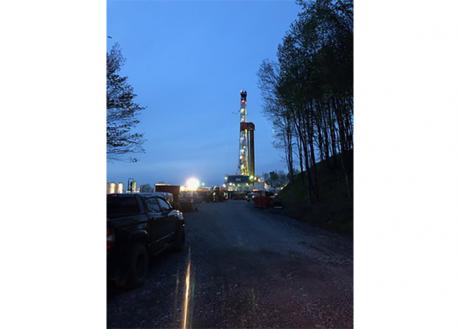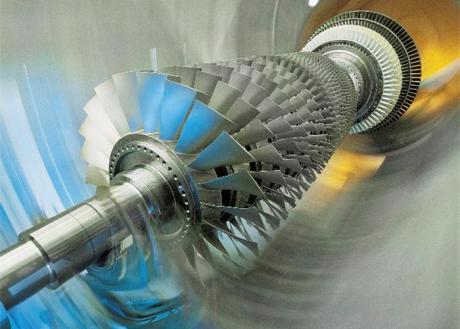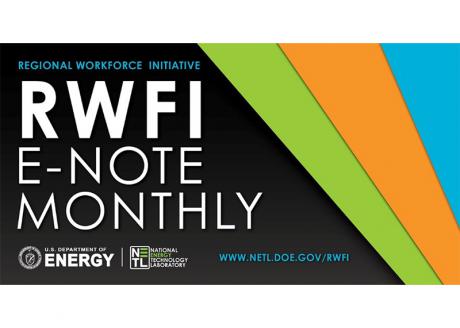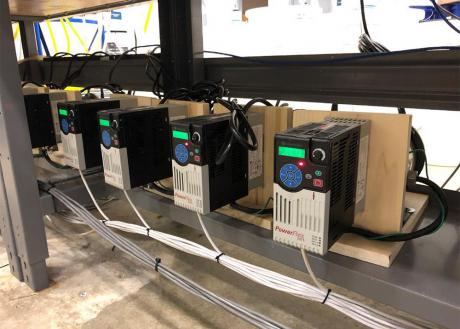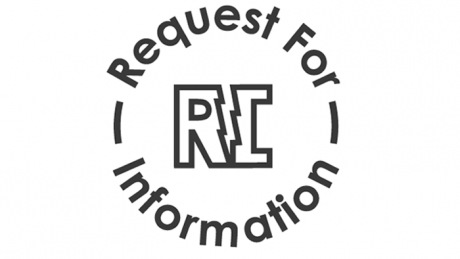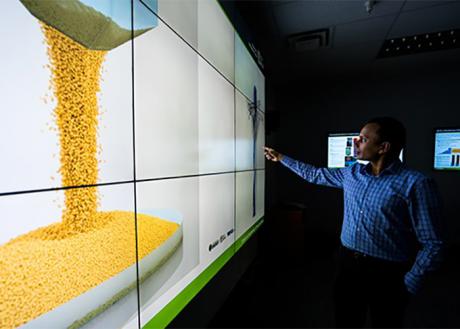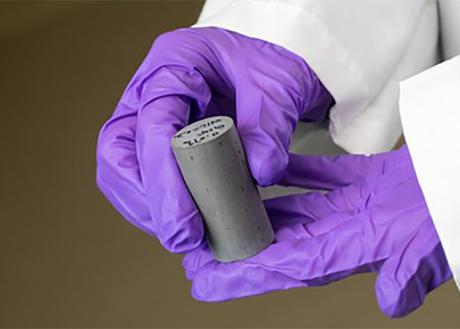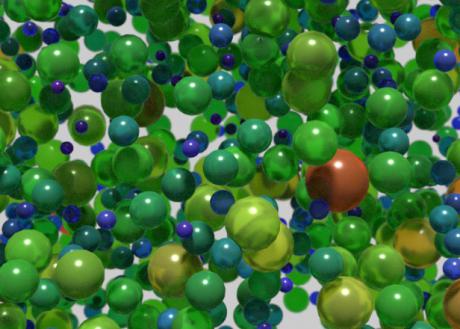A novel geospatial data method developed by NETL researchers for modeling and predicting geologic structural complexity within the subsurface has been published in the Journal of Structural Geology. By helping to develop better tools and techniques to predict the storage and behavior of carbon dioxide, natural gas and other resources within the subsurface, NETL’s innovative research is enabling hydrocarbon extraction efforts to operate cheaper and more efficiently while leaving a lighter environmental footprint.
NETL scientists are advancing the development of high-entropy alloys (HEAs) that can withstand significantly higher temperatures and extreme stress to enable gas turbines to run with greater efficiency.
The development of these durable materials will not only enable industrial gas turbines to generate cleaner electricity using abundant domestic energy sources, they also may be used to manufacture the stronger components needed to build next-generation aviation turbines (jet engines) that require less fuel and produce fewer emissions.
The December 2020 edition of RWFI E-Note Monthly, a newsletter published by the NETL Regional Workforce Initiative Team, highlights information about the nation’s energy challenges and opportunities to develop the diverse talent needed to meet them.
An NETL-supported project at West Virginia University (WVU) to extract economically and strategically important rare earth elements (REEs) from Appalachian coal resources reached new milestones, such as partial automation of the recovery process, and exceeded its original REE purity and recovery goals.
The U.S. Department of Energy (DOE) selected 29 projects to receive nearly $7.6 million in federal funding for cost-shared research and development. The projects will advance energy storage technologies under the Funding Opportunity Announcement (FOA) DE-FOA-0002332, Energy Storage for Fossil Power Generation.
Today, the U.S. Department of Energy's (DOE) Office of Fossil Energy (FE) announced plans to make $4 million in federal funding available for cost-shared research and development of tools and methods to optimize safe, secure, and verifiable carbon dioxide (CO2) storage.
The U.S. Department of Energy’s (DOE) Office of Fossil Energy (FE) has issued a request for information (RFI) to develop technologies needed to attain an uninterruptable domestic supply of critical minerals (CMs) and rare earth elements (REEs).
NETL experts in systems engineering and analysis (SEA) are developing multi-scale approaches to modeling and analysis of technology, processes and markets. In 2020, through models and digital tools, reports and collaborations, the Lab’s SEA researchers made significant progress toward advancing technology solutions for our nation’s energy challenges.
Throughout 2020, NETL’s materials engineering and manufacturing research has demonstrated how historic energy resources can be used in remarkable new ways and how elements commonly thought of as a liability may present exciting new economic opportunities.
Harnessing the Potential of Carbon Dioxide
For example, carbon dioxide (CO2) may one day transition from a waste gas that contributes to climate change to a high-value feedstock used in the production of fuels, pharmaceuticals, plastics, fertilizers and a range of consumer goods.
NETL recently released version 20.3 of its world-renowned Multiphase Flow with Interphase eXchanges (MFiX) software suite, which included an improved modeling capability that allows for more accurate descriptions of real particle-size distributions, offering an important new tool for designing next-generation energy systems to power the nation. The new feature was sponsored by NETL’s Crosscutting Research Simulation-Based Engineering program.





